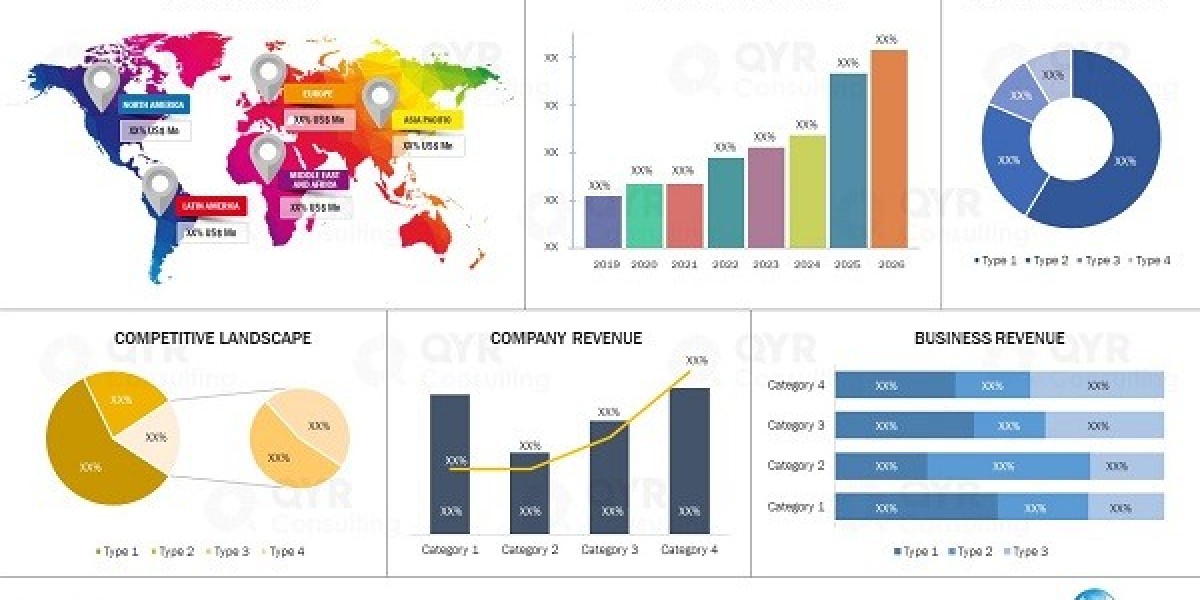Seeing the Unseen: Navigating the Infrared Gas Sensor Market
The Infrared (IR) Gas Sensor market is a pivotal segment within the broader sensor industry, offering a crucial technology for detecting and quantifying various gases based on their unique absorption of infrared light. Unlike some other sensor types, IR gas sensors offer high selectivity, long-term stability, and are less susceptible to poisoning, making them indispensable in applications where accuracy and reliability are paramount. As concerns over safety, environmental monitoring, and industrial efficiency grow, the demand for these sophisticated sensors is on a consistent upward trajectory.
Understanding Infrared Gas Sensors
IR gas sensors operate on the principle of Non-Dispersive Infrared (NDIR) technology. Each gas absorbs infrared light at specific wavelengths. An NDIR sensor typically consists of an infrared source, a sample chamber (or optical path), a wavelength filter, and an infrared detector. When the target gas is present in the sample chamber, it absorbs a portion of the IR light at its characteristic wavelength. The detector measures the amount of light that passes through. A decrease in the detected IR light indicates the presence and concentration of the gas.
These sensors are primarily used for detecting:
Combustible Gases: Methane (CH4), Propane, Butane, and other hydrocarbons.
Carbon Dioxide (CO2): A critical gas for indoor air quality, industrial processes, and environmental monitoring.
Refrigerant Gases: Various HFCs, CFCs, and HCFCs.
Other Gases: Such as nitrous oxide (N2O) in medical applications.
Driving Forces Behind Market Growth
Several significant factors are propelling the expansion of the Infrared Gas Sensor market:
Stringent Safety Regulations: Growing awareness and stricter governmental regulations regarding workplace safety, leak detection in industrial facilities (oil & gas, chemicals), and fire prevention are primary drivers. IR sensors provide continuous and reliable monitoring of hazardous gas levels.
Increasing Demand for Indoor Air Quality (IAQ) Monitoring: With a greater focus on health and well-being, especially post-pandemic, the demand for CO2 sensors in HVAC systems for homes, offices, schools, and public spaces is surging. Efficient ventilation driven by CO2 levels helps reduce energy consumption and improve cognitive function.
Expansion of HVAC and Building Automation Systems: The integration of smart sensors into modern Building Management Systems (BMS) for energy efficiency and environmental control is a key factor.
Growth in the Oil & Gas Industry: From upstream exploration and production to downstream refining and distribution, IR sensors are crucial for detecting methane leaks, ensuring operational safety, and reducing greenhouse gas emissions.
Rising Adoption in the Automotive Sector: As vehicles become more connected and autonomous, there's a growing need for CO2 sensors for cabin air quality control and for methane/LPG detection in alternative fuel vehicles.
Medical Applications: IR sensors are used in medical diagnostics for monitoring respiratory gases like CO2, N2O, and anesthetic agents, ensuring patient safety during surgery and recovery.
Environmental Monitoring: Increasing concerns over climate change and air pollution are driving the use of IR sensors for monitoring greenhouse gases and industrial emissions.
Industrial Process Control: Precise gas measurement is vital in various industrial processes, including food & beverage (CO2 monitoring in fermentation), chemical manufacturing, and semiconductor production.
Key Market Trends
Miniaturization and Cost Reduction: Manufacturers are constantly innovating to produce smaller, more compact IR sensors, making them suitable for integration into a wider range of portable and consumer-grade devices. Efforts to reduce manufacturing costs are also making the technology more accessible.
Enhanced Accuracy and Selectivity: Continuous R&D is focused on improving sensor accuracy, reducing cross-sensitivity to other gases, and extending their lifespan.
Wireless Connectivity: The integration of wireless communication capabilities (e.g., Wi-Fi, Bluetooth, LoRa) into IR sensors facilitates remote monitoring and easier deployment in distributed sensor networks.
Multi-Gas Detection: Development of sensors capable of detecting multiple gases simultaneously, reducing the need for multiple discrete sensors.
Integration with IoT and AI: IR sensors are increasingly becoming part of larger IoT ecosystems, sending data to cloud platforms for analysis, predictive maintenance, and AI-driven insights.
Demand for Low-Power Sensors: Particularly for battery-powered and remote applications, there's a significant focus on developing IR sensors with minimal power consumption.
Challenges
Despite the robust growth, the market faces challenges such as the relatively higher cost of IR sensors compared to some electrochemical alternatives, the need for regular calibration in certain applications, and the impact of dust and humidity on sensor performance in harsh environments.
Nonetheless, the inherent advantages of IR technology — its stability, selectivity, and long lifespan — position it strongly for sustained growth. As global priorities continue to shift towards safety, environmental stewardship, and smart living, the infrared gas sensor market will remain a critical technology, silently safeguarding our environments and enhancing our daily lives.
Related Reports:
Semiconductor Inspection Microscope Market







